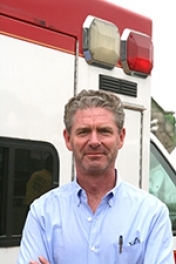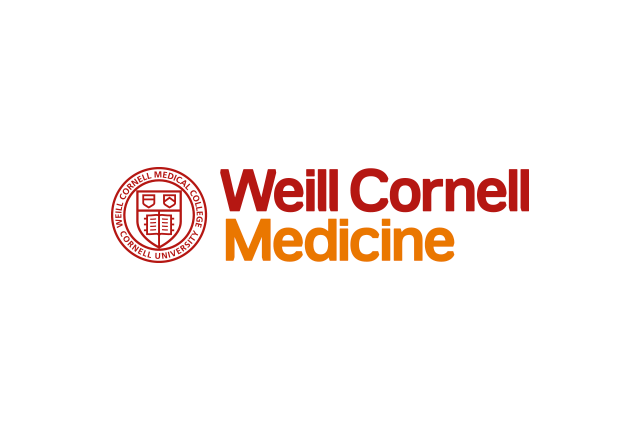At Major Events Like Burning Man and Coachella, Dr. Eric Salk '92, practices 'mass gathering medicine'
But what happens if, in the midst of this geographically isolated "crucible of creativity," someone gets sick or injured?Late last summer, some 70,000 people flocked to a barren tract in Nevada's Black Rock Desert for the massive, week-long Burning Man festival. On a dry lake bed hundreds of miles from civilization, they established what organizers of the annual event describe as "a temporary metropolis dedicated to community, art, self-expression and self-reliance."

Dr. Eric Salk '92
Coping with such calamities is the job of Dr. Eric Salk '92. A veteran emergency physician, Dr. Salk works with CrowdRX, a company that provides healthcare services to a wide variety of large-scale gatherings. Its clients include music festivals (Coachella, Lollapalooza, Electric Zoo); sporting events (the U.S. Open tennis tournament, the NBA All- Star game); and major venues (Madison Square Garden, Yankee Stadium, Radio City Music Hall). "Every event is unique; it's hard to come up with a formula for what resources you need," says Dr.Salk, who was the company's founding medical director and now serves as a consultant. "It depends on the environment — whether it's a festival spread out across 20 acres or if you're in a fixed stadium. Are you in a city with three hospitals a few blocks away, or all the way out at Burning Man, where you've got 70,000 people in the middle of the desert, 200 miles from the nearest hospital?"
Treating patients under such circumstances is part of a growing subspecialty known as "mass gathering medicine." The field, Dr.Salk says, is getting more sophisticated and organized than in the past, when medical care at large events was often provided by local ambulance services, and doctors were hired on an ad hoc basis. In preparing CrowdRX's presence at a venue, he and his colleagues consider not only location but existing resources, including transport times to local hospitals and factors such as the proximity of a trauma center. The nature of the event also dictates the likely complaints: at electronic dance music (EDM) shows, drug and alcohol abuse can be serious issues, while at triathlons, clinical staff may see sports injuries, heat exhaustion and heart attack. "You see the full spectrum," he says, "from the most minor scrapes and bruises to people who are critically ill to occasional fatalities."
Last year's Burning Man was Dr. Salk's first trip to the festival, and the first time CrowdRX serviced it. "We basically had to create an on-site hospital including X-ray, ultrasound, laboratory services and the ability to fly the most critically ill patients out for evacuation," he says. "Burning Man gets every age, so we had to be prepared for kids coming in with fevers and sore throats, as well as people well into their 80s with cardiac complaints." Common conditions include "playa foot" — skin burns from going shoeless on the fine, alkaline soil — as well as eye abrasions and other effects of the event's notorious dust storms, which are so bad that visibility is counted in feet. "Burning Man was really impressive," says Dr. Salk, who got licensed to practice in Nevada so that he could provide hands-on care. "I'd seen videos and read about it for years, but it's really hard to explain the extent of it. The level of creativity that people bring to it, the commitment, the spirit in this huge city that just pops up over- night in the desert — it's just unbelievable."
In addition to treating emergencies, Dr. Salk and his colleagues aim to prevent them from happening in the first place. They work with event organizers and community partners to mount harm-reduction campaigns — promoting, for example, adequate hydration or responsible substance use. At some EDM shows, they deploy peer ambassadors — often medical or nursing students — who mingle with the crowd to identify revelers who need help. Dr. Salk himself has worked numerous EDM events — and yes, he wears earplugs. "It's not my favorite type of music — I'm more of a Led Zeppelin and classic rock kind of guy," he says with a laugh. "But I must say that for all the bad press these festivals sometimes get, when I walk through the crowd, I'm always impressed with the positive energy and the supportive, loving feeling among the kids."
Dr. Salk hails from a prominent medical family: his uncle was polio vaccine pioneer Dr. Jonas Salk, and his father, the late Dr. Lee Salk, was a renowned child psychologist who taught at Weill Cornell Medicine in the 1970s and 1980s. For Dr. Salk, who holds a master's in public health from UCLA, mass gathering medicine is a sideline; his full-time career is as an emergency physician in northwestern Connecticut, where he has also held medical leadership roles at hospitals and in his local community. He notes that, since the care at such gatherings is paid for by the event itself, the field offers a welcome respite from the less enjoyable parts of conventional practice, such as documenting charts or navigating insurance coverage. "I love emergency medicine, but practicing within our healthcare system can be stressful," he says. "At these festivals, we're able to practice medicine person to per- son, without a lot of paperwork; we're reimbursed, more often than not, with hugs and smiles. It reminds you of the fun, human side of practicing — why I went into medicine in the first place."
— Beth Saulnier
This story first appeared in Weill Cornell Medicine, Vol. 15, No.2.

